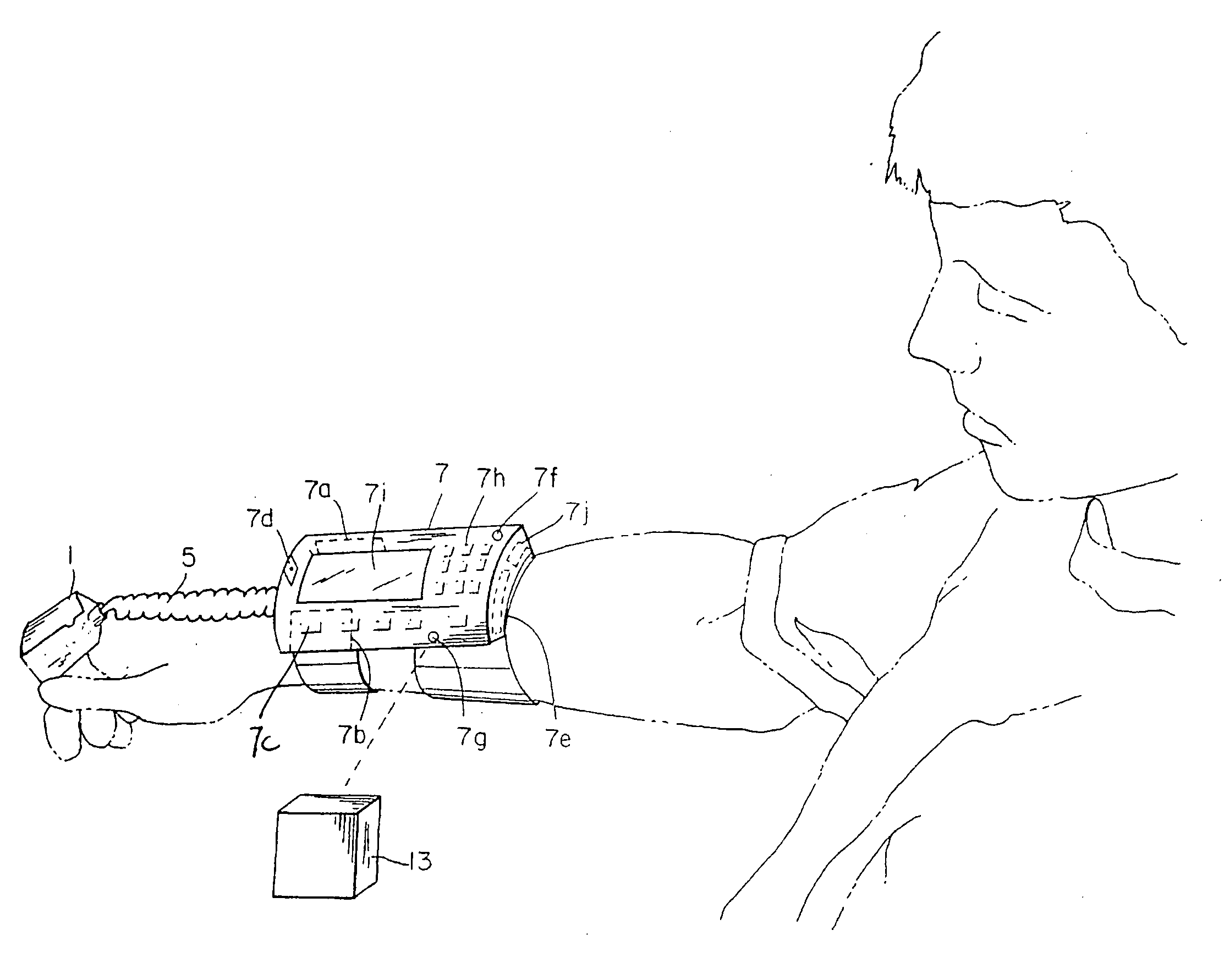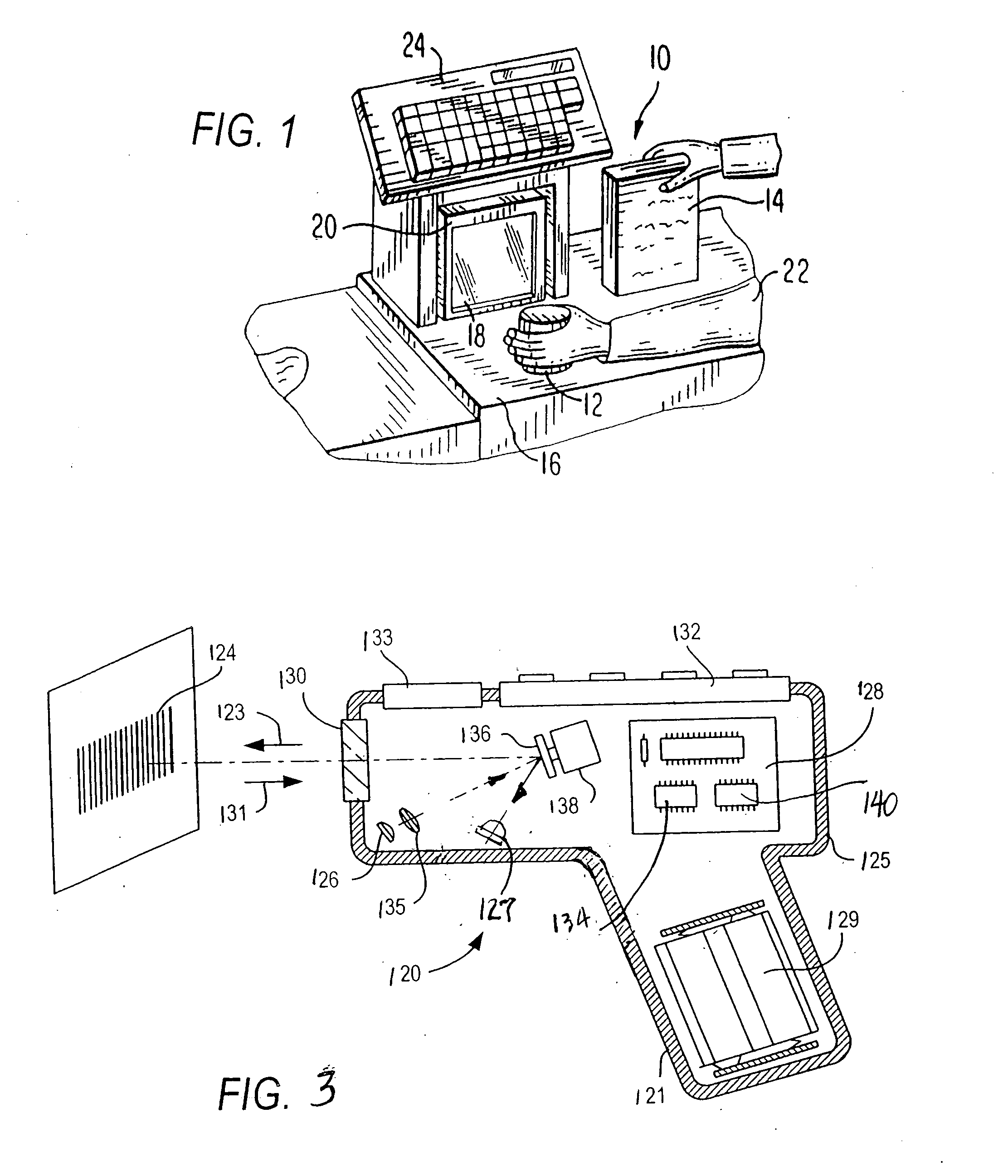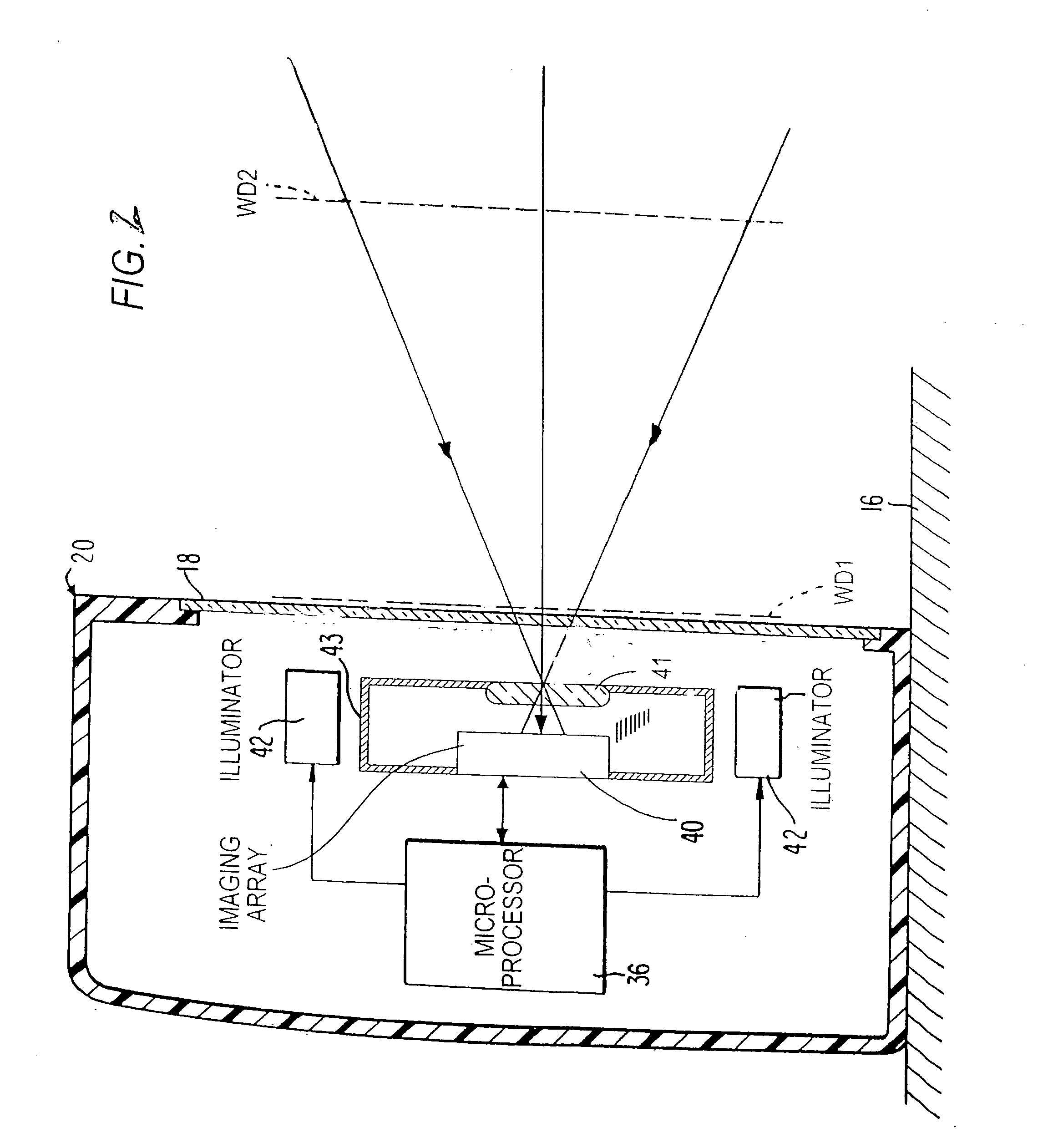Triggerless electro-optical reader
a technology of electro-optical reader and trigger, which is applied in the direction of instruments, sensing record carriers, dynamo-electric converter control, etc., can solve the problems of consuming electrical energy, physical triggers are prone to breakage, and unsatisfactory in some respects, and achieve automatic triggering the reader, saving a great deal of electrical energy
- Summary
- Abstract
- Description
- Claims
- Application Information
AI Technical Summary
Benefits of technology
Problems solved by technology
Method used
Image
Examples
Embodiment Construction
[0023]Reference numeral 10 in FIG. 1 generally identifies an electro-optical imaging reader in a workstation mode for processing transactions and mounted on a checkout counter at a retail site at which products, such as a can 12 or a box 14, each bearing a target symbol, are processed for purchase. The counter includes a countertop 16 on which a box-shaped vertical slot reader 20 having a generally vertical window 18 rests. A checkout clerk or operator 22 is located at one side of the countertop, and the reader 20 is located at the opposite side. A cash / credit register 24 is located within easy reach of the operator. In the workstation mode, the operator presents the symbols on the products to the window 18. The reader 20 is portable and lightweight and may be picked up from the countertop 16 by the operator 22 in a handheld mode, and the window 18 may be aimed at a symbol preferably on a product too heavy, or too large, or too bulky to be easily positioned on the countertop in fron...
PUM
 Login to View More
Login to View More Abstract
Description
Claims
Application Information
 Login to View More
Login to View More - R&D
- Intellectual Property
- Life Sciences
- Materials
- Tech Scout
- Unparalleled Data Quality
- Higher Quality Content
- 60% Fewer Hallucinations
Browse by: Latest US Patents, China's latest patents, Technical Efficacy Thesaurus, Application Domain, Technology Topic, Popular Technical Reports.
© 2025 PatSnap. All rights reserved.Legal|Privacy policy|Modern Slavery Act Transparency Statement|Sitemap|About US| Contact US: help@patsnap.com



